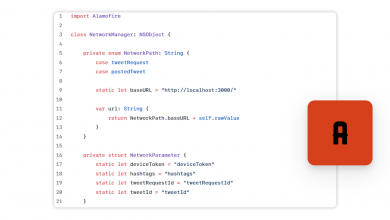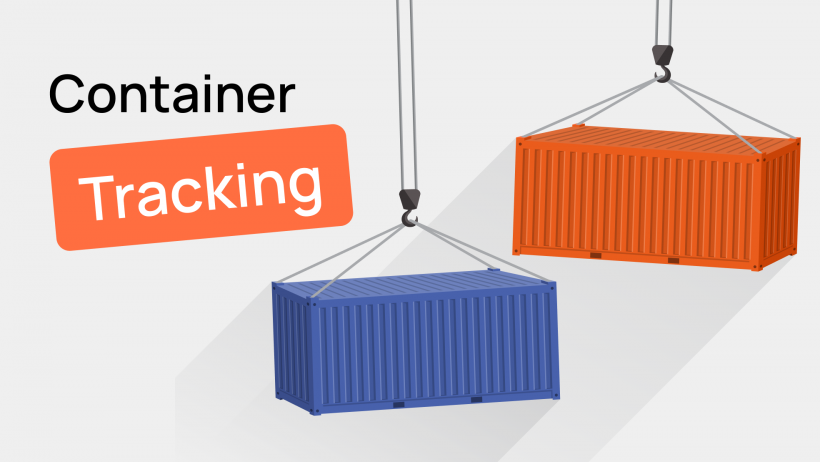Any port in a storm? The logistics industry is continuously undergoing drastic changes, but with modern shipping container tracking technologies at your disposal, you can save time, resources and avoid making mistakes as your distribution never leaves your oversight. Wirelessly tracking shipments is an increasingly common practice for the numerous advantages and is quickly becoming an industry standard.
Read on to find out how you can go beyond partial optimization using a few checkpoints and embrace complete supply chain visibility with a container tracking system.
What is a Container Tracking System?
Optimizing logistical operations should be a constant goal for any distribution enterprise.
As the arena of logistics is growing in complexity and diversity, the shipping process grows more uncertain. Modern logistics is typically carried out by several actors, and with more layers, the process becomes harder to oversee with outdated processes where data is only collected when cargo reaches predefined checkpoints. The blind spots created by this, added with unstable conditions like COVID-19, leaves businesses scrambling to find more accurate data for know-how on distribution and work efficiency. The answer is real-time supply chain visibility.
Leveraging the concept behind the Internet of Things (IoT), where weak points are eliminated by a continuous stream of data, a container tracking system relies on monitoring devices. These can be completely autonomous and connect you with your cargo. They are transported with your cargo and have embedded sensors, or are linked to remote ones, that transmit precise real-time data. Useful types of data to know include:
- Current and historical location: to improve accuracy of operations, suggest optimal routes and provide business intelligence. This data is used for ETA prediction as well as geolocation and geofencing, which are useful for targeted market action and minimizing dwelling time and rehandling at terminals.
- Door status: whether it is opened or closed at any one moment in time.
- Temperature: for the monitoring of perishable goods and those susceptible to temperature fluctuations, mostly food and pharmaceuticals.
- Shock/motion detection: to report any unusual activity that may harm fragile merchandise or to detect tampering and damage.
- Air quality: especially important in cold-chain logistics.
…And many more, in fact, any critical asset data that your business may need can be tracked. If there’s a sensor for it, data is collected in a cloud-based fashion and can then be processed or shared depending on any business requirements.
Once you have your customizable trackers, with any additional sensors, and an integrated cloud-based analytics platform, just two more things are needed for a complete container tracing system: a catalog of Application Programming Interfaces (APIs) and communication protocols. APIs facilitate compatibility with platforms and communication protocols allow interoperability. Now a complete system, this modern logistics technique ensures reliability, agility and transparency. But how will it work exactly?
How does a Container Tracking System Work?
The logistics industry has found itself faced with needing to digitize and digitalize. To digitize refers to using digits, like code-based data, and to digitize means to incorporate digital technologies like trackers and display desktops. Covering these two aspects, you get an observable and interactive computerized parallel of your distribution network.
This system fulfills your logistic needs with positioning technology based on sensors deployed in container trucking and shipping. Active smart devices continuously streaming surveillance straight to you become like your guards that never sleep. When there is a claim against you or your shipment is compromised, all you need to do is enter the cargo’s ID and you will find a record of its entire journey. Then you can prove you’re not responsible or adjust.
Now you’ve decided you want to maintain customer confidence and connect your assets with an IoT approach, then you need to know how to track a shipping container. You don’t have to develop it yourself: there exist many software companies out there who, along with their partners, can have you kitted out and ready to track in no time. You can be ready to provide a high level of service without delay instead of going through long trial and error to gain the ability to track cargo on your own.

Firstly, an installer will attach devices appropriately to your cargo and test their performance, calibrating them to your needs. Next comes a pairing process where the IoT platform receives device IDs, the container ID, installer ID, location, and a timestamp. What’s needed to facilitate this pairing and ensure future compatibility, as mentioned before, is a catalog of APIs. What APIs do exactly is pass on data about container statuses to websites or platforms that organize and display the necessary information. This can include integrating the tracking solution to your website and providing a great experience for your customers.
Next comes the configuration of your tracking services. You need to customize data publishing rates and decide any additional data you may need to log. Remember that as data on physical conditions inside container is periodically provided, it is essentially being collected continuously and with more data comes more smart contextualized information you can take into your considerations.
This brings us to the final step of shipping container tracking setup: standardization. We all know how important formal standards are, and the ones that apply here are the Business Requirements Specification (BRS). This defines specific data elements needed for Smart container solutions like those of the UN.
Problems Solved
Tracking is important beyond just checkpoints: logistics managers need to know the status and location of cargo and now you can ascertain constantly changing movements with live updates on its whereabouts. Find out who’s responsible for deviations from protocol, or where protocol went wrong. You can know the exact what, where and why. This makes previously untraceable shipments able to be tracked with ease. Collect actionable data from anywhere in the world and achieve full control over the shipping process.
To ensure better customer service, and meet their growing expectations, inventory must be kept accurately, and cargo must consistently make long journeys safely. Minimize risk and labour of operators involved with investigating customer claims, which can take a lot of time and effort. Further, with cross border risk management you can reduce insurance premiums by offering higher reliability on the state of cargo. Put safety and security first.
For goods that spoil, there is need for such reliable infrastructure, especially where you can push updates to your fleet without having to read a coding textbook! Up productivity as you conveniently limit losses due to spoilage and theft. React remotely to and plan corrective measures for disruptive events, like moving your supply chain in response to even extreme circumstances.
Any conceivable transparency issue in the supply chain can be solved by receiving notifications of container status automatically gathered as needed. You can also receive more favorable terms from shipping companies for your enhanced cooperation.
Technologies Required for a Tracking System
An electronic tracking system is a requirement of modern transportation, that much is now clear. To conclude, we will lay-out the specific technologies applied throughout the tracking system. It is important to note that the system hinges on the specific use of telematic data (relating to telecommunication, vehicular technologies, and electrical engineering). This type of data is obviously very reliable and allows you to fully leverage tracking services.
To construct the digital overlay of your supply chain the main technological groupings in the system are:
- Active Smart Devices with Sensors: communicating with GPS to GSM or satellite the devices stream data as instructed. Can also be short-range wireless, like RFID, Bluetooth, Wi-Fi or NFC. They may stream continuously or can also be accelerometer or location activated.
- Cloud Computing: refers to consolidation on a digital platform, in this case data and sensory inputs.
- AI and Machine Learning: coupling this with cloud computing creates the magic we know as cloud analytics: where algorithms are used against data in a cloud. This is used to deliver countless results and predictions of interest and can even give advice.
- APIs: compatibility software.
- Communication codes: to avoid deployment limitations.
Now that you understand the fundamentals of why you need to be using next-generation logistics. Ensure effective port and shipment processes, optimize your logistics network.
